Integrative machine learning models predict prostate cancer diagnosis and biochemical recurrence risk: Advancing precision oncology
- PMID: 40819002
- PMCID: PMC12357910
- DOI: 10.1038/s41746-025-01930-6
Integrative machine learning models predict prostate cancer diagnosis and biochemical recurrence risk: Advancing precision oncology
Abstract
Prostate cancer (PCa) ranks among the most prevalent cancers in men worldwide. Biochemical recurrence (BCR) presents a major clinical challenge in PCa management, with significant prognostic heterogeneity observed among patients post-recurrence. This study aimed to develop machine learning models for predicting both the diagnosis and prognosis of PCa patients. Using WGCNA, we initially identified 16 BCR-related target genes. Cluster analysis revealed these genes were significantly associated with PCa prognosis, drug sensitivity, and immune infiltration. We constructed a robust diagnostic model integrating multiple machine learning algorithms, demonstrating strong predictive capability for PCa. Furthermore, a BCR-related prognostic model built using the LASSO algorithm also yielded satisfactory performance. Among the differentially expressed BCR-associated prognostic genes, COMP emerged as a critical regulatory factor. Both in vitro and in vivo experiments confirmed COMP's role in influencing PCa progression. Additionally, COMP demonstrates significant potential as a dual biomarker for both the diagnosis and recurrence prediction of PCa.
© 2025. The Author(s).
Conflict of interest statement
Competing interests: The authors declare no competing interests.
Figures

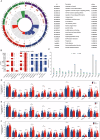
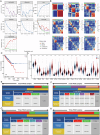

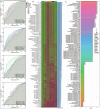

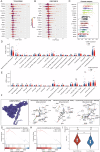
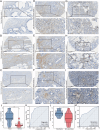
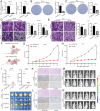
Similar articles
-
Identification of metastasis-related genes for predicting prostate cancer diagnosis, metastasis and immunotherapy drug candidates using machine learning approaches.Biol Direct. 2024 Jun 25;19(1):50. doi: 10.1186/s13062-024-00494-x. Biol Direct. 2024. PMID: 38918844 Free PMC article.
-
Identification and validation of cancer-associated fibroblast-related subtypes and the prognosis model of biochemical recurrence in prostate cancer based on single-cell and bulk RNA sequencing.J Cancer Res Clin Oncol. 2023 Oct;149(13):11379-11395. doi: 10.1007/s00432-023-05011-7. Epub 2023 Jun 28. J Cancer Res Clin Oncol. 2023. PMID: 37369799 Free PMC article.
-
An EcDNA gene-based risk model and functional verification of a key ec-lncRNA AC016394.2 for prostate cancer.Cancer Cell Int. 2025 Jul 1;25(1):240. doi: 10.1186/s12935-025-03886-9. Cancer Cell Int. 2025. PMID: 40597366 Free PMC article.
-
Diagnostic systematic review and meta-analysis of machine learning in predicting biochemical recurrence of prostate cancer.Sci Rep. 2025 Aug 4;15(1):28378. doi: 10.1038/s41598-025-11445-5. Sci Rep. 2025. PMID: 40760134 Free PMC article.
-
Different predictive values of microvessel density for biochemical recurrence among different PCa populations: A systematic review and meta-analysis.Cancer Med. 2023 Feb;12(3):2166-2178. doi: 10.1002/cam4.5093. Epub 2022 Aug 7. Cancer Med. 2023. PMID: 35933720 Free PMC article.
References
-
- Zhong, J. et al. Combining MRI radiomics, hypoxia gene signature score and clinical variables for prediction of biochemical recurrence-free survival after radiotherapy in prostate cancer. Radiol. Med. (2025). - PubMed
-
- Cornford, P. et al. EAU-EANM-ESTRO-ESUR-ISUP-SIOG guidelines on prostate cancer-2024 update. Part I: screening, diagnosis, and local treatment with curative intent. Eur. Urol.86, 148–163 (2024). - PubMed
-
- Van den Broeck, T. et al. Prognostic value of biochemical recurrence following treatment with curative intent for prostate cancer: a systematic review. Eur. Urol.75, 967–987 (2019). - PubMed
Grants and funding
LinkOut - more resources
Full Text Sources
Miscellaneous

